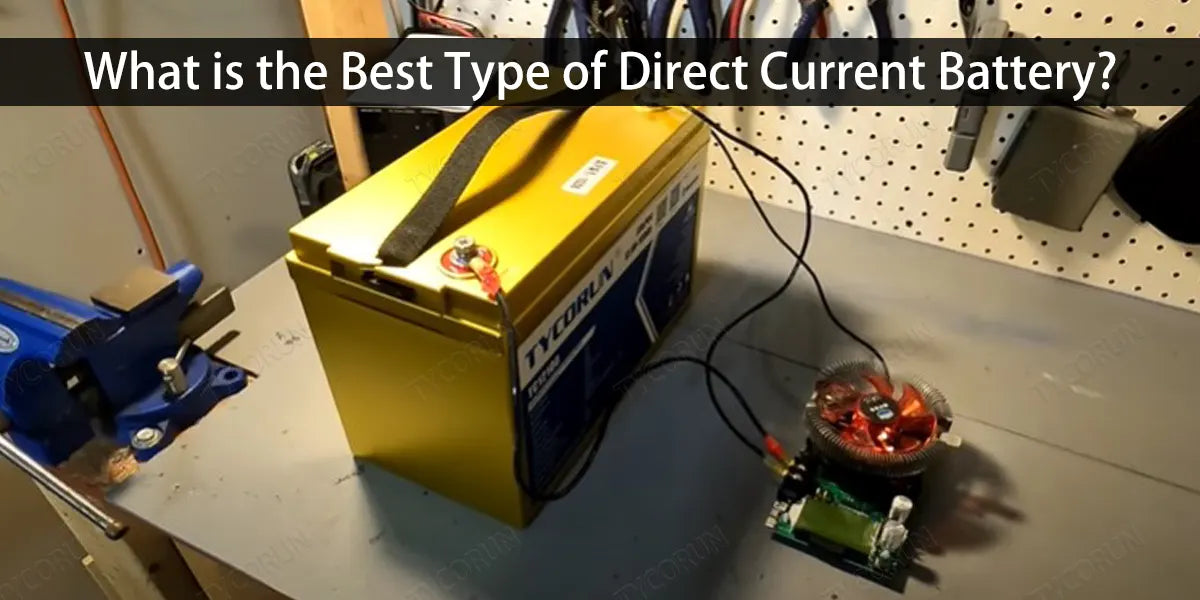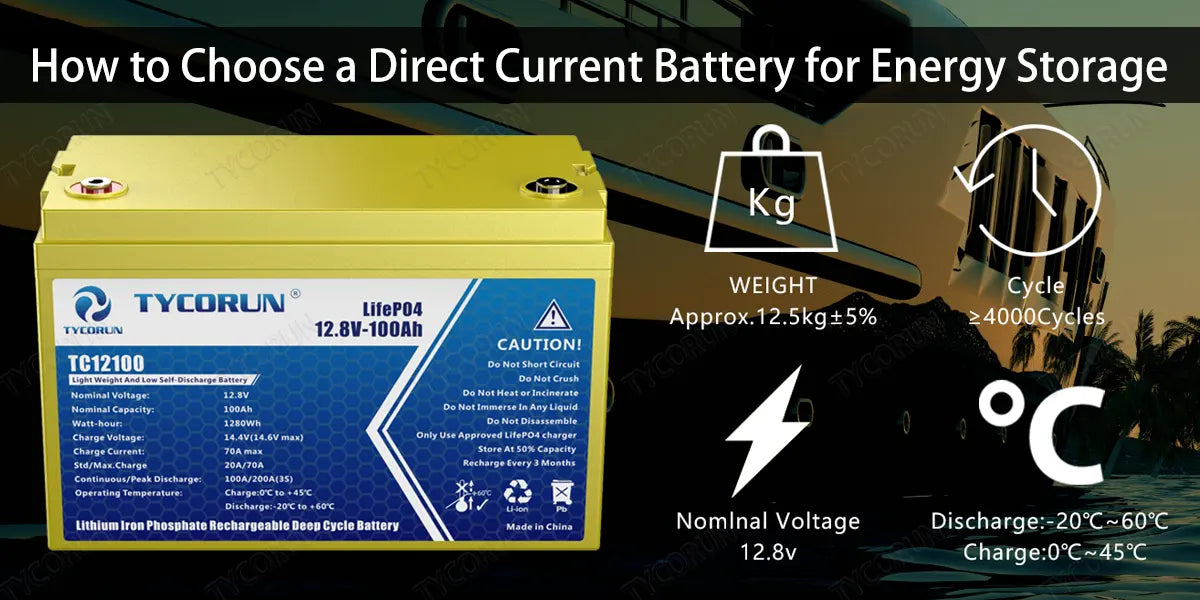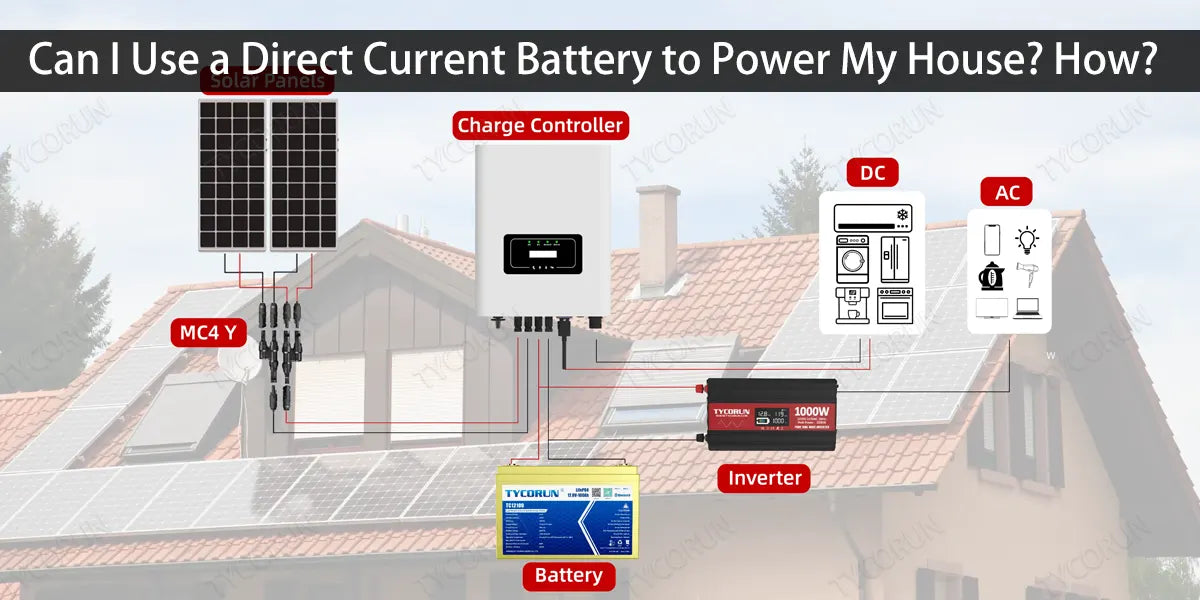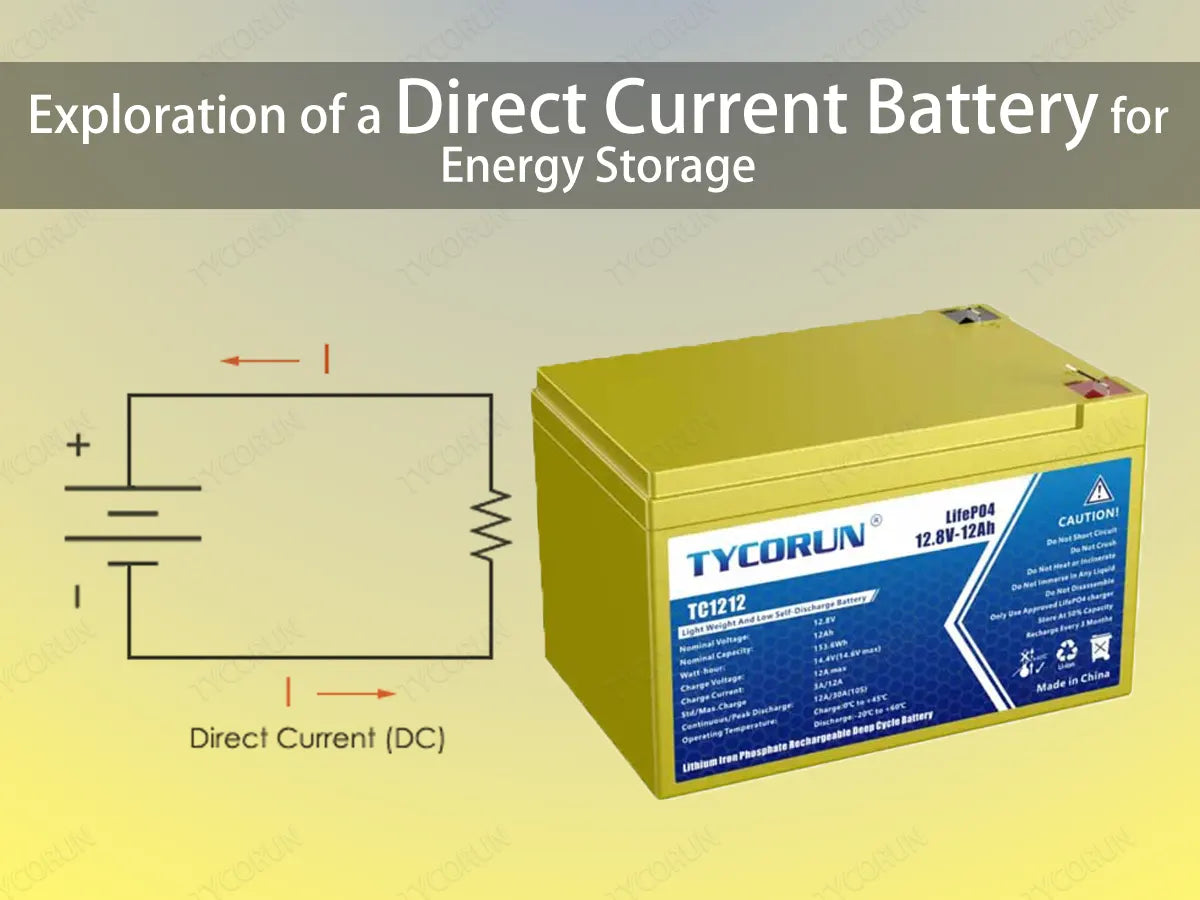
In the intricate tapestry of modern energy storage, a direct current battery emerged as crucial components, driving the seamless functioning of electronic devices, electric vehicles, and renewable energy systems.
This in-depth exploration navigates through the realms of direct current batteries, unravelling their intricacies, probing their functions, and spotlighting the unparalleled prominence of lithium batteries in the expansive landscape of energy storage.
Main content:
- What is a direct current battery?
- What is the function of a direct current battery?
- Why are batteries DC rather than AC?
- What is the best type of direct current battery?
- How to choose a direct current battery for energy storage
- How do you store DC current in a battery?
- Can I use a direct current battery to power my house?
- FAQs
What is a direct current battery?
A direct current battery (DC) is a fundamental electrochemical device designed to store and release electrical energy in a unidirectional flow. Unlike alternating current (AC), which periodically changes direction, DC maintains a consistent flow of electric charge. This makes a direct current battery the cornerstone of countless electronic devices and portable gadgets, serving as compact reservoirs of power that enable the controlled discharge of energy.
An exploration of the field of electrochemistry is necessary to comprehend the internal mechanisms of a Direct Current battery. One or more electrochemical cells, with a positive and negative electrode submerged in an electrolyte, make up a direct current battery. A direct current of electricity is produced when a circuit is closed due to a chemical reaction that causes electrons to move from the negative electrode to the positive electrode.
What is the function of a direct current battery?
The primary function of a direct current battery is to store electrical energy for subsequent use. This stored energy can then be released when needed, providing a controlled and steady source of power.
In essence, a direct current battery acts as a compact powerhouse, efficiently storing energy for various applications. From the small button cells in your wristwatch to the larger lithium-ion batteries in electric vehicles, these batteries serve as indispensable energy reservoirs, ensuring a reliable power supply for our increasingly electronic-dependent lifestyles.

Why are batteries DC rather than AC?
In the perennial debate between alternating current (AC) and direct current (DC), batteries unequivocally favor the latter. Batteries inherently store and provide energy in the form of DC, aligning seamlessly with devices and appliances that operate on this current type. The choice for DC in batteries is rooted in simplicity and efficiency, avoiding unnecessary energy conversions and complexities associated with AC-DC transformations.
AC is favored for long-distance power transmission due to its ability to easily change voltage using transformers, reducing energy losses over vast distances. However, for the crucial function of energy storage in batteries, DC is the preferred format. It ensures a stable and direct flow of electric charge, making it ideal for the controlled release of energy in a myriad of applications.
What is the best type of direct current battery?
Within the realm of direct current batteries, lithium batteries stand out as the paramount choice. Ltihuim iron phosphate battery, in particular, exemplify excellence in terms of efficiency, longevity, and energy density. Their lightweight design, extended cycle life, and remarkable energy density position them as the preferred choice across a myriad of applications.
Lithium batteries have become synonymous with high-performance energy storage solutions. Their ability to pack a substantial amount of energy into a relatively small and lightweight package makes them ideal for portable electronics, electric vehicles, and renewable energy systems. Moreover, advancements in lithium battery technology continue to push the boundaries of energy storage, making them a driving force in the transition towards cleaner and more sustainable energy solutions.

How to choose a direct current battery for energy storage
Selecting the optimal direct current battery for energy storage involves a meticulous evaluation of various factors. Considerations include specific energy requirements, desired cycle life, weight constraints, and the intended application. Lithium batteries consistently emerge as optimal choices, providing versatility and superior performance for diverse energy storage needs.
Higher energy density allows for more energy to be stored in a smaller and lighter battery, a critical factor for applications where size and weight are limiting factors. Furthermore, the intended application plays a pivotal role in the selection process. Understanding the specific needs of the application ensures the chosen battery seamlessly integrates into its intended context.
Basically, the selection of an energy storage battery revolves around these elements: how much battery capacity is needed, battery voltage and chemistry. Tycorun's hottest selling DC battery pack is the 12 volt 100ah deep cycle lithium battery. For energy storage applications, the primary focus is on the number of battery cycle and the depth of discharge of the direct current battery.

How do you store DC current in a battery?
Storing direct current in a battery involves a charging process where electrical energy is converted into chemical energy for later use. This process can be facilitated through various means, ranging from traditional chargers for consumer electronics to more advanced systems like solar panels.
In consumer electronics, charging typically occurs through dedicated chargers that convert AC power from outlets into DC power suitable for the battery. These chargers often employ sophisticated control circuits to ensure a safe and efficient charging process.
On the other hand, solar energy systems utilize solar panels to generate DC electricity directly from sunlight. This DC electricity is then stored in batteries for later use, providing a crucial component of off-grid or remote power solutions. The ability to store solar-generated DC electricity allows for a continuous power supply, even during periods of low sunlight.
Can I use a direct current battery to power my house?
Certainly, a direct current battery can effectively power a house when integrated with an inverter. A best solar inverter plays a pivotal role in this process by converting the stored DC power within the battery into alternating current, which is the standard form of electricity used in most household appliances.
A direct current battery can collect the energy collected by the solar panels through a controller, and an inverter can then provide the energy from the battery to the appliances in your home. If you happen to need an inverter, you can refer to the inverter buying guide.
The integration of direct current batteries and inverters has become a cornerstone of home battery storage systems. These systems allow homeowners to store excess energy, often generated from renewable sources such as solar panels, for use during periods of high energy demand or when renewable sources are not actively generating electricity.

During times when electricity demand exceeds the capacity of renewable sources, the inverter seamlessly switches from drawing power directly from the grid to utilizing the stored DC power in the battery. This not only ensures a continuous power supply but also allows homeowners to take advantage of stored energy during peak electricity rate hours, potentially reducing overall energy costs.
FAQs
Why is DC used in electronics?
Direct current is the preferred choice in electronics due to its stability. Many electronic devices, including smartphones, laptops, and integrated circuits, operate on this type of current, ensuring consistent and reliable operation. The stable flow of electrical charge in a single direction aligns perfectly with the requirements of these devices.
Do all batteries use DC current?
Yes, all batteries fundamentally store and provide electrical energy in the form of direct current. While certain applications may require the conversion of DC to AC for specific devices, the foundational energy storage within a battery is in direct current.
What happens to charge in direct current?
In direct current, electric charge flows consistently in one direction. This stable flow allows for a controlled and continuous release of electrical energy, making DC well-suited for applications where a steady power supply is essential.
Related posts: 1000w inverter, best 3000 watt inverter, battery stores near me















